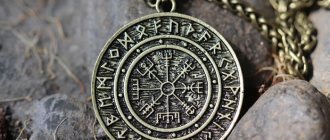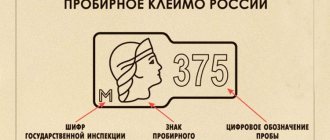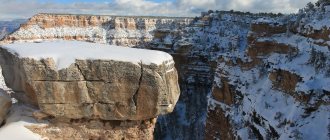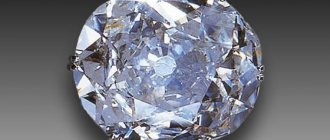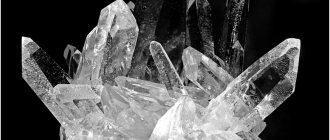Many people puzzle themselves every day with the question of how to make money? Some of them get hired jobs, others build their own businesses, etc. However, few people think that nature itself gives people the opportunity to earn income if they use natural treasures, from which they can easily make money.
What natural treasures can you find for free and sell?
Gold
When talking about natural treasures, this is the first thing that usually comes to mind. Gold is really expensive. However, the main difficulty is its extraction. Not all gold miners succeed in acquiring wealth, but even the process of mining this metal itself is beautiful. On the other hand, you probably won't regret mining gold. You'll enjoy the sun, the water, the beautiful scenery and maybe even find a real gem.
How to find a job in 2022? The horoscope will tell you
Colleagues keep their distance from you: disadvantages of being the boss's favorite in the office
Career goal for the coming year: how to set it to successfully achieve it
So what will you need?
- First of all, buy the necessary equipment.
- Find a place where you can find gold.
- Gather information on how to do it correctly.
- Find buyers who will pay you for the precious metal. These, for example, could be local stores that buy gold.
Treasures from the river bottom
It has long been known that the muddy waters of Musya hide many strange things. Another thing is that no one has managed to make a fortune from them before. Since the 1970s, divers have been collecting metal debris and wood that fell into the river from merchant ships. They often came across ancient coins and shards, but they did not realize that there was also a demand for such finds.
The turning point was the Southeast Asian Games, a regional Olympics that Palembang hosted in 2011. The sand needed for the construction of sports facilities was raised from the bottom of Musi. Along with it, so many ancient artifacts appeared on the surface that they were finally noticed by serious collectors.
Finds from the bottom of Musi almost immediately surfaced in the antique markets of Bali and Jakarta, and then at auctions on the Internet, where they were bought up by foreign collectors. The divers realized that they had attacked a gold mine and focused on searching for antiquities, which were immediately bought up by antique dealers.
When news of the arrival of foreigners spread throughout the area, groups of divers began to approach us to offer their goods, obtained from the river bottom. It appears that a significant number of men engage in this type of fishing on a regular basis, making do with only diving goggles and a hose carrying compressed air. Iron rods are used to probe the muddy bottom, which often causes significant damage to Chinese porcelain.
John Mixicarchaeologist
After genuine antiquities, fakes also appeared. This is facilitated by the fact that jewelry made from precious metals, unlike ceramics or coins, is quite difficult to date. “Things can be made, thrown into the Musi River, and then picked up again as if they were found there,” Indonesian archaeologist Retna Purwanti told the South China Morning Post.
The same thing happened in other parts of Sumatra - in particular, in the peatlands 80 kilometers southeast of Palembang. It is believed that the first valuable find in those places was an ancient gold ring, which was discovered in 2005 by a local resident who was loosening the soil in his garden. After forest fires in 2015, the river receded, and coins and jewelry, including gold, began to be increasingly found in the exposed silt. Now the peat bogs feed a small army of professional treasure hunters.
Gold rings, beads and coins of the 7th-10th centuries found in the Musi River
Photo: Wreckwatch Magazine
Flowers
If you live in a big city, you may have seen street vendors selling bouquets of flowers that florists throw away. In fact, this is another affordable way to sell what you get for free.
However, you can collect flowers in another way. To do this, you need to go to the nearest forest or field. Of course, you should not pick endangered species of flowers that are listed in the Red Book. However, no one is stopping you from collecting daisies, daisies and other wildflowers. Also, do not neglect the fern leaves, which will become a stylish touch in your bouquet.
You can make bouquets and sell them in foil wrapping, or put them in inexpensive vases and double the price.
Action steps
If the river is really steep, you should study the features of the riverbed and its changes using maps and the terrain. This is where it makes sense to start your search. In addition to the channel, you should study the bottom of the river. All marks during the study should be placed on the map to make it easier to navigate and head in the right direction. The stage conditionally consists of the following parts:
- detours of the river valley;
- studying the flow of the river;
- drawing up a gold search plan;
- research that is carried out on the shore to understand whether there are satellite rocks of the precious metal.
The bypass of the river valley must be carried out by prospectors, since there is a chance that the precious metal will have to be mined not in water, but on land. The process takes place using various devices, for example, metal detectors. The study covers lands at a distance of 10 to 70 meters.
Regarding the river flow: you just need to know the approximate speed of the riverbed and follow the large stones at the bottom. Regardless of the speed, gold particles can linger near large stones, and the movement of the precious metal is always slow due to its heavy mass. The metal does not float with the current, but furrows the bottom, since it is almost 20 times heavier than water. After this, a search plan is drawn up, and zones and tasks are assigned to each member of the group.
A survey of the shore will help you find gold satellite rocks such as quartz or pyrite. It should begin from the places where the river overflows during the flood period. It is worth paying attention to the outer layer. There are several rocks that contain valuable material or indicate the presence of gold in the ground:
- quartz;
- pyrite;
- silver;
- platinum;
- galena;
- adularia
It is these rocks that can be detected using a metal detector. This is a kind of hint from nature that you are looking for gold in the right place. Some of the satellite materials are used as ornamental stones or act as building materials and industrial materials.
And there is also a feature that concerns another precious metal: gold never meets with silver. Moreover, particles of silver may be in gold nuggets, but if a prospector discovers silver, then there is no need to look for gold any further. This search result is also considered satisfactory.
Platinum, on the contrary, is often found in tandem with gold. It can also be mined and sold for more than the yellow metal. Precious metal is often found not near rivers, but in ore deposits, where industrial mining is carried out. More material is extracted from mines than from placers, although in the second type of deposit the gold particles are larger in volume.
The precious metal is often found together with quartz and lies in quartz veins or layers. But galena and adularia are not the most reliable indicators of the location of gold. And also when mining gold, the main thing is not to confuse it with pyrite. The stone was called “fool’s gold” in ancient times because the substance is very similar in color.
Gold panning
To be sure of the value of the find, you should test the nugget for hardness: a dent will remain on the precious metal. The precious material does not shimmer in the light and does not change its soft shade. Although it is necessary to have a metallic sheen, which reveals the nature of the substance. The nugget must be rolled, and it is not always yellow; green and brown shades are possible. It is better to take everything that you find on the territory that looks like gold home to find out the composition of the substance.
Depressions on the bottom of rivers can be regarded as potential sources of precious metal, since gold can be retained in the hole as it moves downstream. If the subsidence process has been formed for years, then the reserve can be impressive.
Wild berries and other products
Having gone into the forest to pick flowers, you may come across a clearing of wild berries. You shouldn't ignore it. After all, this is another natural treasure from which you can earn extra money.
Working with marketplaces is not encouraging: what difficulties do self-employed people face?
Bored with work, no promotions: wait for a resume or leave
Millions for bonuses: Apple paid employees bonuses of up to $180 thousand
Some people hate picking berries but would enjoy eating them. Use this idea to make money. Go to the same forest or to a sunny meadow to pick wild blueberries, raspberries or blackberries. Once you collect enough crops, you can sell them and earn money. This may not be the biggest income. However, you will be working outdoors. At the same time, you won’t pay a penny for the berries themselves, which grow in the wild.
In a similar way, you can earn money by collecting other wild fruits. For example, it is enough to visit an abandoned apple or pear orchard and come out with buckets full of ripe fruits that you can sell.
Your clients can become not only ordinary people, but also entire catering establishments that need the food products that you offer. However, to do this, you will have to agree with management on such cooperation.
Money and demand: is it worth working as a packer and what are the salaries in the regions?
25% of Russians would return to the last job they quit.
This will expand the circle of consumers: reasons to run an online business
Search algorithm
There are several basic rules, following which it will be easier to detect precious metals, and the search will be quick and effective:
- Search in areas where mining has already taken place. Most equipment is unable to completely extract gold from the ground or river bank. If geologists, after research, have already said that there is no gold in the area, this means that the precious metal really cannot be found there. Since professional determination methods are more sensitive to the presence of precious metal.
- Studying the landscape. Analysis of geological maps before searching for gold.
- Working in groups of miners. It will be difficult for one person to cope with this task, but several people will be able to conduct searches and analyze information at the same time.
- Purchase of equipment for gold mining.
- Familiarization with the features of the territory.
If you are looking for gold in a river or other bodies of water, you should pay attention to shallow streams. It is in them that you can find so-called nests with a high concentration of precious metal in the form of flakes and nuggets. Remember that under the pebble layer there are bedrock deposits or durable rocks, which are otherwise called “rafts”. Over time, gold seeps through dense rock and settles in bedrock deposits. And the nuggets that are most often found on rafts are the largest in size; they are usually not found deeper.
A metal detector is not capable of detecting nuggets underwater at different depths. The nugget contains a large amount of diamagnetic precious metal, which complicates the task, and the sensitivity of the metal detector decreases. It is better for prospectors to find streams in which the gold will be located as superficially as possible. It is better to choose mountain rivers that often change their course and are not too deep. But even in such reservoirs there are difficulties, since the river bed can change and the flow speed along the inclinations is high, so gold particles can be carried over long distances.
It is necessary to check the rocks and their crevices nearby. Even if you discover gold with some kind of device, it is not a fact that you will be able to extract it from the gorge. Such deposits belong to placers and are called residual.
Even if the shore is eroded to magma, areas of gold may still remain. But terrace deposits are more common. This means that the river brings more soil and irregularities or layers are formed on it, which are called terraces. The precious metal is hidden under the top layer of clay.
Ambergris
One day the media reported that a British resident, while walking along the beach, found a piece of ambergris worth several dollars. This is a really expensive find that can bring you extra money too.
What is ambergris? This is a waxy substance that forms in the whale's intestines and is then spewed out. Sometimes such lumps end up on the beach, where anyone walking can find them.
You may not know, but ambergris is used in the perfume industry. This is a rather rare and incredibly expensive substance that is used to make luxury perfumes. It is not surprising that ambergris is highly valued in the market. Currently, a record has been set that is more than a million dollars for a piece of ambergris found by chance.
Where to donate the treasure?
If a gold nugget is found not on one’s own territory, then by law it must be given to the state. However, the finder will not immediately receive his compensation. You will be faced with tedious, lengthy paperwork: expert assessments, documentation verification, and much more. There are numerous cases where people waited for their money only after several years. What can be done in such situations? There is only one thing that will help – contacting a lawyer.
What will happen if those who find treasures do not hand over to the state? There is no criminal liability for concealing them. But the rule does not apply to treasure of archaeological or historical value. In this case, the state has the right to confiscate all found jewelry. If the search was not carried out on the territory of an important state monument, then there will be no criminal liability or fines.
Finding jewelry is quite a difficult process. It all depends on your luck and equipment. But now you know what to do and where to take it.
Truffles
These mushrooms are among the most expensive in the world. They grow in the depths of the earth. That is why it is quite difficult to find truffles, and in appearance they resemble the root crops of the familiar potato.
As a rule, these mushrooms grow near oak trees, and sometimes near coniferous trees. Truffles have a persistent, pleasant aroma. As you know, pigs are great at finding them.
However, you can also try your luck and go in search of truffles, the sale of which can bring a good income. For example, some manage to collect truffles growing in forests and then sell them to restaurants, earning money in this way.
In addition, you can offer the found truffles to a private buyer, who can be found on the Internet by placing an appropriate advertisement.
There are even special maps that help you find out in which places truffles grow. Prices for them vary depending on the area, so it is better to find out about them at retail outlets in your locality.
Where to find pebbles
We are looking for stones and minerals.
Rocks and minerals can be found everywhere, but finding the beautiful ones requires some knowledge, observation and practice.
Let's consider how different people look at rocks and minerals, and what they mean to them:
An ordinary adult, as a rule, does not pay attention to them at all, he goes about his business, stones. for him do not exist until one gets under his foot or is needed to drive the dog away.
The middle child notices the stones and admires their shape and color. Children, as a rule, collect them indiscriminately, or select them only according to some criteria that only they understand.
The geologist, with his professional eye, notices every pebble, but he is interested in, and accordingly ends up in the backpack, only those that can contribute to the completion of a specific task at the moment. The designer, sculptor, and architect have their own view of stones.
The average stone collector looks for specific types of stones as part of a hobby.
Real Rockhounds (rockhounds), as they are called in English, extract samples of interest to them wherever possible and impossible. They sneak into mines, quarries and other mining sites, and dig into the dumps of old and existing mine workings. They conduct excavations in places little known to the rest of humanity, and in the end they exchange or even buy treasured stones from each other, gradually turning their home partly into an exhibition of a geological museum, partly into impenetrable warehouses of boxes, boxes, bags of stones.
Okay, let's not go to extremes. Let us assume that we are no longer an indifferent category that does not notice anything. noted at the beginning of the article and not the omniscient and omnipresent crazy rockhounds. Where can an ordinary interested person find beautiful stones for his modest collection?
And free of charge and beneficial for the mind and health? First, let's look at where stones, beautiful and ordinary, come from. From the sky? Yes, it happens, but very rarely. In addition, they are unsightly in appearance.
Where and how did minerals appear?
Most of the stones were formed, so to speak, “underground”, at great depths, at high temperatures, etc. pressures Do you remember learning in school that the earth consists of a core, a soft mantle and a crust? Moreover, to give it to us. idea of the relative thicknesses of these layers, was the earth compared to an apple?
The peel of an apple is the bark. The pulp of the apple is the mantle. It is in this “peel” that the stones were formed at different times - from millions to billions of years ago. The thickness of the “peel” is 30-40 km. By human standards, the depth is decent. And we call it “firmament,” but in a more global sense it is a shaky thing.
Nothing compared to the bottomless ocean of the mantle on which she floats. And now and then in one place, then in another, the earth’s crust “squashes” and warps. Some areas are moving towards others. folds (mountains) appear, the bark cracks at the seams (at the old ones and at the newly formed ones). Molten masses rise from the mantle along fractures in the crust, sometimes reaching the surface and pouring out in the form of rapidly cooling lava. and sometimes getting stuck in the depths of the earth’s crust and hardening, cooling, crystallizing there for thousands of years..
At the same time, in different parts of the cooling body or outside it, the most diverse types occur. combinations of chemical and physical processes.. And somewhere, with a unique combination of certain factors and a confluence of certain circumstances :-),. rock crystal is formed, in some places rubies, in others other minerals.. Years passed, more precisely millennia and “million years”, the earth’s crust continued to warp and break.. Some of its sections rose, others sank into the depths. The rising areas were subject to destruction by surface forces (wind, water, sun, etc.) and some areas of our petrified body. ended up on the surface in the form of rocks, for example. And along with them some deposits of gems or... came to the surface or became closer to it and more accessible to humans.
Further destruction of the rocks led to the “pulling away” of the stones along the earth’s surface. Large blocks could move, first simply by rolling down the slope, and then as they were crushed. transported by streams and rivers.. Well, enough about genesis (that is, about origin). All this was necessary just to be logical. figure out where to look for pebbles.
So, where are we looking:
- Rocks, bedrock outcrops, ruins near bedrock outcrops... Here you also need to take into account man-made rock outcrops such as tunnels, cuts of roads and railways into rocks, quarries, etc.
- The banks of rivers, streams, lakes, seas and oceans. Sometimes, using fragments of gems found on the bank of a stream, one can go to the root outcrops and vein where these fragments come from. Remember the famous story by Jack London? It's true that they were talking about gold, but the principle is the same. Sometimes, inside an inconspicuous pebble found on the shore, a beautifully designed jasper, agate, or agate can be hidden. chalcedony. Or the pebble could be a geode filled with amethyst or rock crystal.
Cane
Of course, you won’t be able to find a ready-made cane in nature. However, you can find many thin branches that require minimal processing before they can be turned into canes.
A hand saw will cut the wood in a minute, and a pocket knife may be enough for finishing later, depending on what kind of canes you're making.
If you do this regularly, you can cut a dozen canes a day. Old leather jackets can be used to cut strips to make handles. You can also decorate the canes with marbles, coins and other decorative elements to increase their value. To purchase decor, it is enough to spend mere pennies, but this will significantly increase the cost of the finished product.
Types of deposits
Very rare and beautiful stones are considered valuables.
Among them, the most famous are sapphire, ruby, diamond, topaz and emerald. A large number of popular, but not precious minerals are included in the group of ornamental minerals. They look no less beautiful than the same rubies, they are just as popular in jewelry making, but they cost much less and are more common. The most famous minerals each have their own deposit. Everything depends only on the composition of the rocks in the area. Most often, deposit development has been going on for several centuries in the same place; new ones are discovered very rarely. The most famous countries for the extraction of precious stones are as follows:
- Namibia and the Russian region - Yakutia - specialize in diamonds.
- Turquoise is mined in large quantities in Iran.
- Most of the rubies on the world market come from Pakistan.
- Sri Lanka is the place where you can buy sapphires and rubies.
- Topazes are mined in the Urals.
The Russian Federation is rich in various mineral resources, not only oil and gas, but also precious and semi-precious minerals. In addition, there are a kind of reserve workings - spare places in the event of complete depletion of large ones.
There are only three types of deposits that are used throughout the world: open pits, placers and mine workings. A little more about each:
- Placers are places where valuable minerals were washed ashore by water flow. This occurs as a result of the natural separation of minerals from the underlying rock, and soil erosion is to blame. Extraction of precious and semi-precious stones from placers is carried out only by manual washing of slag.
- Open pits are a popular way to mine useful minerals and fossils from rock layers. The more time passes from the start of work, the deeper the quarry. Moreover, the largest of them is located in Chile, its depth is already 850 meters. If we talk about Russia, then there are giants here too. The largest diamond deposit can be considered the Udachnoe quarry; it is located beyond the Arctic Circle and fully lives up to its name.
- Mining workings are traditional underground mines where precious stones are extracted by manual labor. First, a test working is created; it is needed to determine the quantity and quality of stones, and only after that, if it has justified itself, workers are sent in.
Mining is rightfully considered the most dangerous method of mining. If safety rules are not followed, collapses may occur. Sometimes workers find an outlet of gas or underwater water, this does not lead to anything good.
Gems
These are some of the natural treasures that can bring you extra income. However, finding gems is not so easy. You need to know the places where you really should look for minerals. Otherwise, you may be wasting your time.
What is the (10+2)*5 method, and how can you save at least an hour of time
What has stopped you so far: what else is worth thinking about before leaving work
People want to save, but spend instead: the illusion of financial responsibility
If your area has public lands where you can find gemstones, why not try this method? You may be lucky and find a diamond or other stone that you can sell at a profit.
Your buyer can be a jewelry store or a private client.
Houseboats in Palembang
The inappropriate sensationalism and dubious allusions to Atlantis that Kingsley makes can be explained by the fact that Wreckwatch magazine is not a serious scientific publication. Kingsley publishes it himself in the spare time he has left after writing non-fiction books about treasure hunting, appearing on television, and running his consulting firm, Wreck Watch International.
Despite this, most of his statements do not contradict the views of specialists. Scientists do not rule out that during the time of Srivijaya, most of the population of Palembang lived on rafts or in houses on stilts standing above the river. On land, only palaces were built for the local nobility.
The Persian merchant Buzurg ibn Shahriyar, who wrote “The Book of the Wonders of India,” spoke about the floating houses in which the inhabitants of Serira, that is, modern Palembang and its environs, preferred to live back in the 10th century.
Some Serir houses are on land, but most of them are built on water and supported on rafts of logs fastened together. The houses are placed on the water as a precaution: if a fire occurs in the neighborhood, each resident can cut off the anchor of his home and move to another place, escaping from the fire; if one of the natives dislikes his neighbor, he also weighs anchor and moves to another quarter
Buzurg ibn Shahriyariz “Books about the wonders of India” translated by R.L. Ehrlich
In the 13th century, Chinese author Zhao Rugua argued that houseboats were required to evade taxes imposed on buildings on land. Another reason was frequent floods - on rafts and stilts, rising water is not dangerous.
The custom survived the collapse of Srivijaya and persisted in one form or another until the mid-19th century, when the British naturalist Alfred Russel Wallace visited Palembang. In his book The Malay Archipelago, he wrote that in the 1850s the entire city consisted of a single row of houses on stilts and rafts, which stood one behind the other along the edge of the river for four or five kilometers, and street traffic was only by boats .
Not all experts share Kingsley's conviction that the finds from the bottom of Musi are necessarily connected with Srivijaya. This, according to the Indonesian archaeologist Retna Purwanti, still needs to be proven: “Foreign researchers say that Srivijaya is the island of gold, and they always mention the story of Sinbad. But this story is fiction. They're just telling stories."
Fishing boats near the Musi River in Palembang
Photo: Edgar Su / Reuters
Rocks
Gemstones are rare, but natural treasures can be found everywhere! And interesting ones can be sold. To do this, you can go to a flea market or a craft show where your potential clients gather.
Some craftsmen create works of art from rocks. However, for this they need material. You can become a supplier of this very material, earning money in this way.
Rocks may also be of interest to private clients, who often use them for landscape design or interior decoration.
If you have abandoned mines near you, this is one of the best places to find interesting rocks, crystals and minerals that you can later sell. You don't need to climb inside. Just rummage through the slag and debris piled up at the entrance to the mine. Rivers and streams are also good places to look.
You can sell not only the rocks you find, but also something more interesting. If you have artistic talent, you can paint on large smooth stones, turning them into original works of art.
Found a violation? Report content
Extraction technologies
Three main methods of extracting gold from the river, used by enthusiastic miners:
- dredge or mini-drag;
- gravitational differentiation;
- metal detector
Dredge
The dredge pumps out the rock from the bottom, moves it into a special chute and washes it, separating the gold. Its negative impact on the environment is offset by its convenience for the gold miner.
Gravitational differentiation
Gravity differentiation is the process of grinding rocks containing gold. This is an industrial method of extraction, which is suitable for developing primary deposits, but is not suitable for private individuals.
Metal detector
A metal detector is a device that probes the soil (both land and the bottom of a river) and gives a sound signal when metal is detected. The disadvantage of a conventional apparatus is that the reaction to gold and any base metal is the same.
So it is recommended to search for Au using a device in the form of a probe equipped with a sensor that reacts only to direct contact with the mineral of interest to us, helping to find gold.
Sri Lanka
This country has already been mentioned as a center for the extraction of special types of precious stones. But there are several noteworthy nuances in the developments themselves. The extraction of precious stones there is done manually; automation is used only as pumps for pumping out groundwater. The mines themselves are dug directly in the rice fields; large working equipment is not used during excavations, so as not to create swamps.
Sri Lanka is famous for its variety of minerals and stones; about half of the varieties of all known jewelry can be found here. But the state is not involved in the development of deposits; for this there are special prospectors who pay an official license annually.
Tags: what, stone, can, be found, river
« Previous entry
And gems love baths
Many stone lovers devote their evenings to processing the collected treasures. An innumerable number of works have been written on this issue, but they are addressed to professionals, and they talk about the manufacture of stone products in industrial conditions. Hobbyists, despite the complexity of working with stone, set up home workshops using extremely simple equipment.
Before sawing stones, it is necessary to prepare and sort them for this. Some of the finds will be used for the collection, and some will be used to make jewelry, boxes and other artistic products.
First of all, the collected stones must be thoroughly washed. In my family, this turns into a kind of ritual when everyone close to me loudly complains about the dirt in the bathroom, and then takes an active part in discussing the merits of the washed samples.
Almost all stones need to be washed - with the exception of water-soluble minerals. The entire arsenal of detergents, brushes, and sponges is used for this purpose. True, I do not encroach on overseas chemistry, but use simple laundry soap or soda.
Very often, with the help of such a simple bath it is not possible to remove the layers deposited on the surface of the stone over hundreds, and possibly thousands of years. Then we have to resort to more effective measures. So, to remove the calcite layer, a five to fifteen percent solution of hydrochloric acid is used. You need to handle it very carefully, and after processing, thoroughly rinse the stones in running water. There is a good remedy for removing iron oxide deposits from crystals - oxalic acid.
We invite you to familiarize yourself with: Do-it-yourself drainage installation and installation yourself
After such processing, the finds must be carefully sorted. Stones have different viscosity (for example, jade is very viscous), fragility, and heterogeneity of properties in the mass (mica can serve as an example of mechanical heterogeneity). However, the main, or at least the first diagnostic sign of sorting is the hardness of the stone.
In geology, a scale proposed by the German scientist Friedrich Mohs is used to determine hardness. The Mohs scale is based on the ability of one harder mineral to scratch another. Minerals were selected whose hardness was accepted as a reference and equal to the ordinal number of the mineral on the scale.
In everyday practice, amateur collectors, and even professionals, often use not the standard minerals of the Mohs scale, but, as they say, improvised means, the hardness of which is approximately known. So a human fingernail - 2...3, a simple pencil of grade T or N - 5, steel of a penknife - 7...7.5. Having even such a minimal set, you can determine the hardness of almost all stones found.

